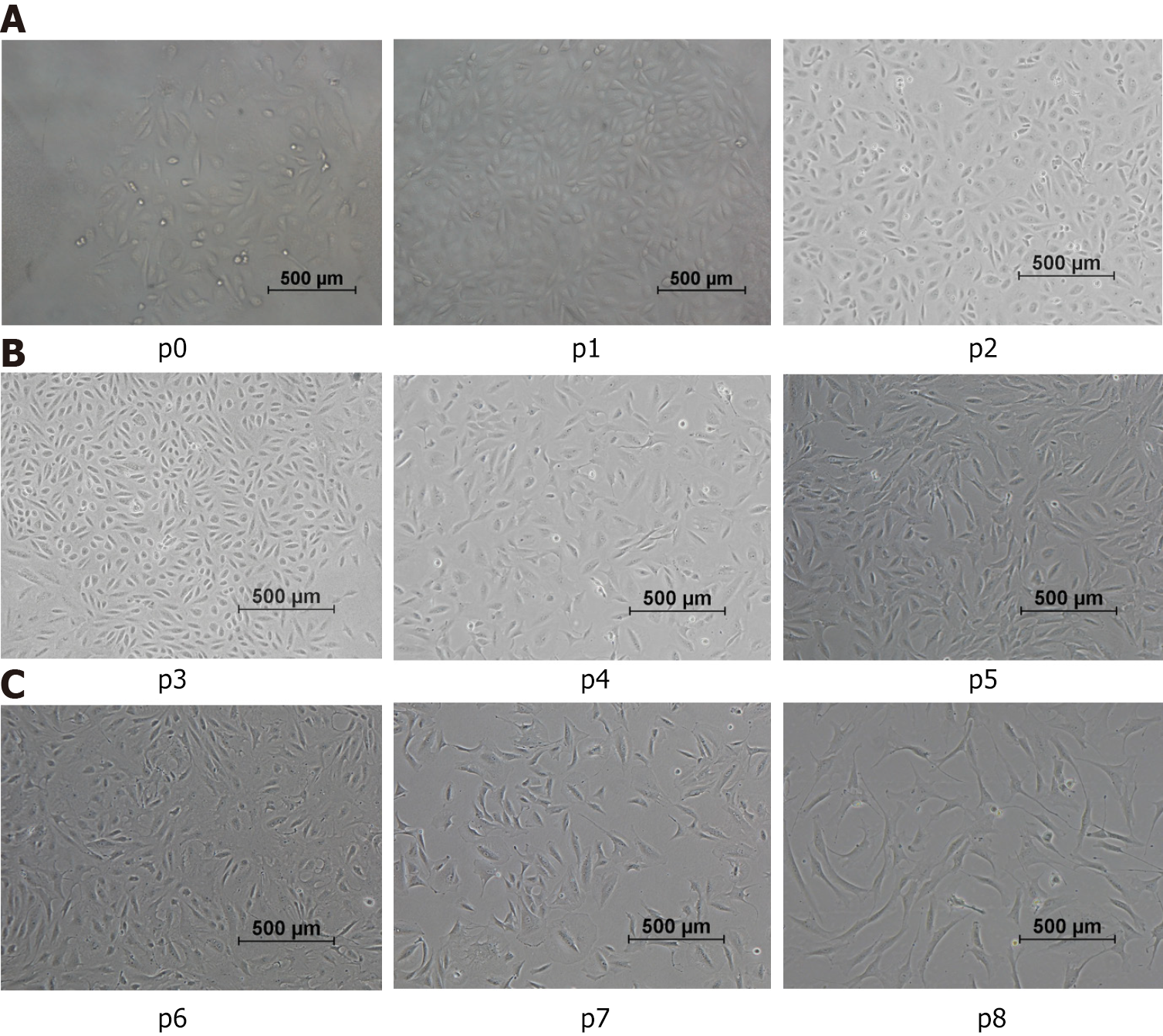Copyright
©The Author(s) 2024.
World J Stem Cells. May 26, 2024; 16(5): 525-537
Published online May 26, 2024. doi: 10.4252/wjsc.v16.i5.525
Published online May 26, 2024. doi: 10.4252/wjsc.v16.i5.525
Figure 2 Morphological characteristics of urine-derived stem cells.
P0: Representative characteristics of the urine-derived stem cells (USCs) at primary passage within 48 h: The cells exhibiting individual colonies adhered to the culture plates, and nonadherent or sparsely adherent small round cells were scattered in the culture plates (100 ×). A: p1-p3: Representative characteristics of USCs from passage 1 to passage 3, between day 3 and day 12: The cell morphology gradually changed from the original “rice-like” shape to a “spindle-like” shape (100 ×); B: p4-p6: The morphology of cells displayed changes that suggest a potential for diverse differentiation, as indicated by variations in shape resembling, but not confirmed to be, endothelial and smooth muscle cell morphologies; C: p7-p8: The morphology of cells from passage 7 to 8 remained in a fibrocyte-like form with a long fusiform shape and grew in the same direction (100 ×).
- Citation: Li F, Zhao B, Zhang L, Chen GQ, Zhu L, Feng XL, Gong MJ, Hu CC, Zhang YY, Li M, Liu YQ. Therapeutic potential of urine-derived stem cells in renal regeneration following acute kidney injury: A comparative analysis with mesenchymal stem cells. World J Stem Cells 2024; 16(5): 525-537
- URL: https://www.wjgnet.com/1948-0210/full/v16/i5/525.htm
- DOI: https://dx.doi.org/10.4252/wjsc.v16.i5.525









